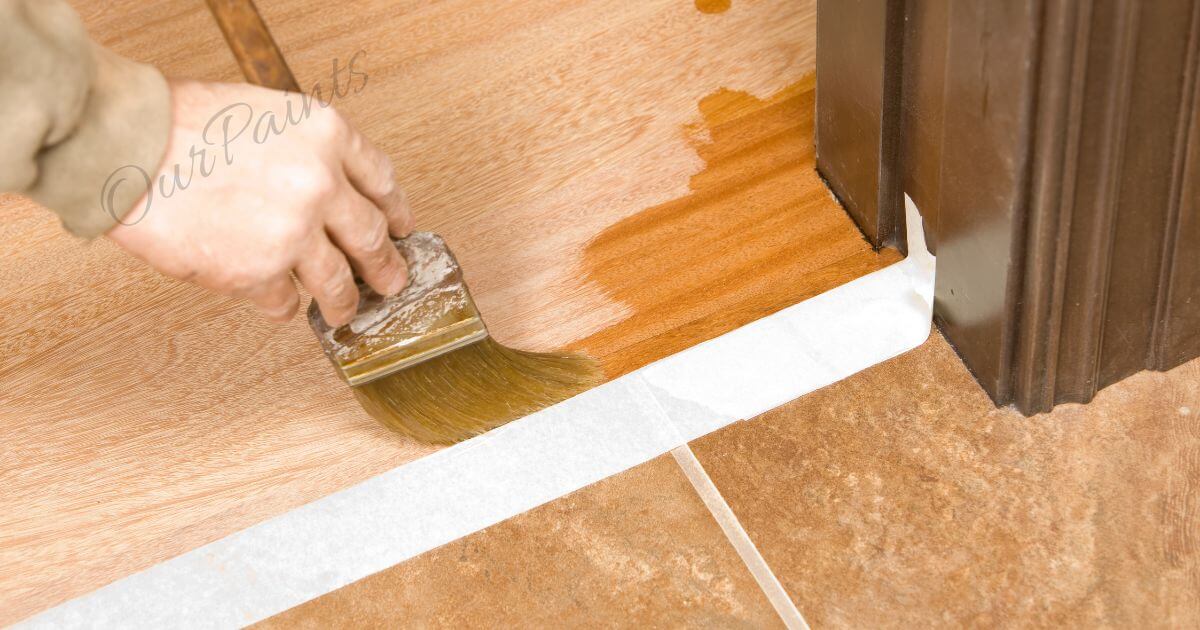In the world of home renovation and the desire for do-it-yourself tasks, the selection of the optimal furniture veneer takes a complex and formidable nature. Lacquer and polyurethane, these giants of finishing materials, each present their unique array of benefits and demerits, creating a puzzling problem for the discerning artist seeking to illuminate the path of their project.
Yet, what if the need comes to amalgamate both of these famous styles into a single piece of furniture? The question looms: Can you put lacquer over polyurethane? This comprehensive collection is set to deliver a clear answer to this question, giving a thorough education in the art of balancing these disparate finishing agents.
Prepare to start on a trip through the intricate nuances that distinguish lacquer from polyurethane, and be privy to the sagacious advice on the most judicious methods for their concurrent application.
Whether you walk the path as a passionate do-it-yourself fan or stand as a seasoned star in the world of woodcraft, I bid you to dig further into the source of knowledge on this ancient topic.
Understanding The Difference Between Lacquer And Polyurethane:
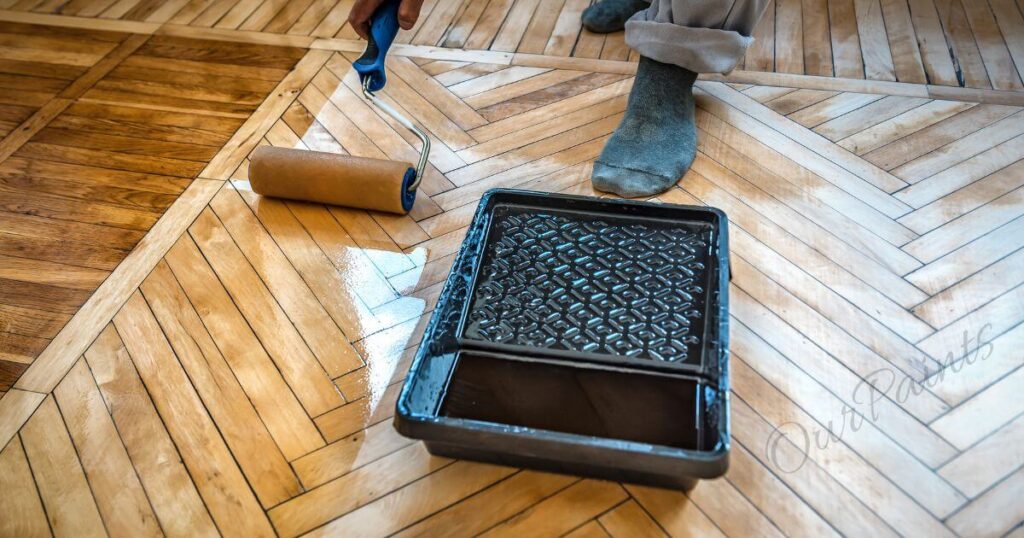
Before delving into the intricate question of whether one can effectively superimpose lacquer upon a foundation of polyurethane, it is imperative to fathom the elemental distinctions that underlie these two distinct finishes. Lacquer and polyurethane, both being eminent choices for sealing and safeguarding wooden surfaces, decidedly unique exhibit traits.
Lacquer:
Steped in historical tradition, has graced woodwork for centuries. This solvent-based coating possesses the virtue of swift drying, culminating in a lustrous, robust finish. It is renowned for its impeccable transparency, profound visual depth, and its knack for enhancing the innate splendor of wood.
Lacquer’s facile application and ease of restoration render it the favored option for woodworkers and furniture craftsmen.
Polyurethane:
In contrast, stands as a contemporary synthetic finish, distinguished by its exceptional resilience and protective attributes. It materializes in both water-based and oil-based iterations. Polyurethane forges an unyielding, protective stratum, impervious to blemishes, discolorations, and moisture.
While it dries at a more measured pace compared to lacquer, it bestows a rugged, enduring veneer capable of withstanding rigorous use and even maltreatment.
The pivotal disparity between lacquer and polyurethane resides in their formulation and manner of application. Lacquer, being a more dilute, solvent-based finish, achieves drying through evaporation, while polyurethane constructs a denser, protective mantle via chemical alchemy.
This fundamental divergence in their chemical composition influences the interplay between these finishes when successively applied.
In the ensuing sections, we shall navigate the intricacies of the compatibility between lacquer and polyurethane, thereby illuminating the feasibility of superimposing lacquer atop a pre-existing polyurethane foundation.
Analyzing The Merits And Demerits Of Lacquer And Polyurethane Finishes:
In the realm of selecting the apt finishing touch for your woodworking endeavors, lacquer, and polyurethane emerge as two distinguished contenders, each proffering a unique spectrum of advantages and disadvantages. Discerning the pros and cons of these options is instrumental in rendering an enlightened choice.
Lacque:
a time-honored classic in the finishing repertoire, boasts a swift drying time, culminating in a robust, high-gloss veneer. It possesses the transformative power to accentuate the innate allure of wood, conferring a polished, glass-like facade.
The versatility of lacquer extends to facile reparability and effortless recoating. Its color diversity and compatibility with spray applications render it a versatile choice.
Nonetheless, lacquer harbors its own set of limitations. It falls short in terms of heat, chemical, and moisture resistance when compared to polyurethane.
It may not be the ideal candidate for surfaces exposed to elevated temperatures, continual water contact, or substantial wear and tear.
A proclivity to yellowing, particularly under the influence of sunlight, further compounds its drawbacks.
Polyurethane:
a synthetic contender, champions the cause of longevity and protection. It forges a durable, impervious layer, resistant to scratches, moisture, and chemical agents. Remarkably, it exhibits an ability to withstand heat, rendering it a fitting choice for surfaces subjected to contact with elevated temperatures.
Its sheen options, including satin, semi-gloss, and high-gloss, facilitate the selection of the desired level of luminance.
Yet, polyurethane presents certain challenges. It demands a more extended drying period in contrast to lacquer, and the task of recoating is marked by heightened complexity. Achieving uniform application, particularly in brush-on scenarios, necessitates a greater degree of skill.
Mending polyurethane finishes proves to be more intricate in comparison to the relative ease of lacquer restoration.
Ultimately, the decision between lacquer and polyurethane pivots on your specific prerequisites and predilections. If expeditious drying and a lustrous facade take precedence, lacquer may be your prime choice.
If durability, heat resistance, and moisture resilience top your priorities, polyurethane stands as the superior alternative.
Deliberate upon the unique demands of your project and conduct a judicious evaluation of the pros and cons, thereby charting a well-informed course regarding the application of lacquer over polyurethane.
Exploring The Compatibility Of The Two Finishes:
In the realm of refurbishing wooden surfaces, a nuanced understanding of finish compatibility assumes paramount importance. A recurring query that surfaces pertains to the feasibility of superimposing lacquer upon polyurethane. Let us embark on a journey through the world of finishes, unraveling the intricacies of this compelling subject.
Polyurethane:
Revered for its widespread utility and robust fortifications, bequeaths an armor of durability. It forges an unyielding shield, fending off the perils of moisture incursion, abrasions, and the vagaries of everyday use.
In stark contrast, lacquer stands as a paragon of timeless aesthetics, delivering a sleek, lustrous veneer that elevates the inherent elegance of wood.
The harmonious coexistence of lacquer and polyurethane hinges on several pivotal considerations. Foremost among these is the condition of the pre-existing polyurethane finish. An aged, worn, or damaged veneer may thwart attempts to overlay it with lacquer.
Thus, a meticulous prelude in the form of surface sanding and thorough cleansing emerges as the vanguard of success, ensuring a seamless and uniform application of the new finish.
The variant of polyurethane at play plays a pivotal role in determining compatibility. Oil-based polyurethane exhibits a lower proclivity for accord with lacquer, invoking potential adversarial reactions. Lacquer’s potent solvent foundation may induce adhesion challenges or even trigger the dissolution of the extant polyurethane.
Water-based polyurethane generally fosters a more harmonious cohabitation with lacquer. Nevertheless, circumspection is warranted; a preliminary compatibility assay upon a discreet, unobtrusive surface segment is prudent. This trial shall elucidate whether untoward reactions transpire or if the finishes form a robust affinity.
In certain scenarios, the exaction of the incumbent polyurethane finish may be necessitated to facilitate lacquer’s adhesion. This regimen, fraught with rigors, may involve the deployment of chemical strippers or the meticulous abrasion of the surface, contingent on the type and state of the polyurethane.
It is imperative to bear in mind that the superposition of lacquer upon polyurethane can potentially metamorphose the final visage. Lacquer, with its vivacious and gleaming countenance, diverges from the demeanor of polyurethane.
The alignment of one’s aesthetic aspirations with the inherent attributes of lacquer necessitates contemplation.
The concordance of lacquer and polyurethane is contingent upon a myriad of factors, encompassing the extant finish’s condition, the polyurethane formulation employed, and the coveted aesthetic denouement.
Methodical trials, judicious groundwork, and a discerning comprehension of potential interplay are the linchpins of an efficacious application. By heeding these considerations, one can confidently navigate the terrain of placing lacquer over polyurethane, ensuring a discerning choice for their refinishing endeavor.
Surface Preparation For A Fresh Finish: The Art Of Sanding And Cleansing
Before embarking upon the application of a new finish, the pivotal stage of surface preparation, encompassing sanding and cleansing, assumes a paramount role. This process forms the bedrock upon which lacquer’s adhesion to polyurethane is fortified, fostering a velvety and uniform denouement.
Initiate the preparatory ritual by wielding a fine-grit sandpaper, preferably a 220-grit variant, upon the polyurethane-clad surface. The choreography here is one of finesse, intended to expunge imperfections, rectify any rudimentary blemishes, and erase any vestiges of prior finish incongruities.
Exercise diligence in adhering to the wood grain’s trajectory, for swerving off this path may summon forth unseemly scratches and inadvertent damage.
Upon the culmination of the sanding crusade, embark on a comprehensive cleansing expedition. The objective here is to banish every vestige of dust, soil, or residual matter.
Employ a dampened cloth or sponge in this endeavor, assiduously sweeping the area, and ensuring an immaculate canvas. In the face of obstinate dirt or tenacious grime, the intervention of a mild detergent or specialized wood cleaner is warranted. This shall be succeeded by a refreshing baptism with pristine water, leaving no room for residue.
With the surface now scrubbed and desiccated, it stands poised to embrace the forthcoming lacquer application. Nevertheless, a caveat merits contemplation: not all polyurethane finishes harmonize with lacquer’s advances.
To circumvent potential discord, it is prudent to consult the manufacturer’s directives, securing the imprimatur of compatibility between the two finishes.
The meticulous observance of the sanding and cleansing rite emerges as the sentinel of superior adhesion and a countenance suffused with professionalism.
This formative stage assumes an ineluctable significance in orchestrating an unblemished transition from the extant polyurethane to the nascent lacquer, culminating in a robust, aesthetically gratifying, and enduring magnum opus.
Conducting a patch test before applying lacquer over polyurethane:

In the pursuit of superimposing lacquer over polyurethane, the commencement of this creative endeavor necessitates a preliminary patch test, a beacon of prudence. This elementary, yet indispensable step, stands as a sentinel against potential calamities, channeling your ambitions toward the desired culmination.
In the inaugural act of patch testing, designate a modest, inconspicuous enclave upon your project canvas, one that evades casual scrutiny. An obscure underbelly or a clandestine corner offers a sanctuary for this crucial investigation.
Initiate the protocol by tenderly sanding the chosen region, ridding it of any preexisting veneer or residual detritus. Subsequently, bestow a slender coat of polyurethane upon this site, observing due fealty to the manufacturer’s prescribed drying interval. Once the polyurethane is thoroughly cured, proceed to grace it with a delicate overcoat of lacquer.
Over the subsequent days, scrutineer this patch with unwavering vigilance, seeking signs of compatibility. Potential dissonance manifests as unsavory maladies – the ominous specters of bubbling, peeling, fracturing, or a most irregular visage.
The emergence of any of these portents portends an incongruity between lacquer and polyurethane. This juncture necessitates contemplation of alternative stratagems.
Conversely, a patch bearing successful results, unmarred by any overt anomalies, augurs a safe trajectory for applying lacquer over polyurethane throughout the remainder of your endeavor.
Even so, a judicious adherence to wisdom implies the application of lacquer in successive, thinly-laid strata, with each stratum afforded the luxury of comprehensive desiccation before the commencement of the next.
Emblazon upon your consciousness the axiom that a patch test is not an act of mere perfunctory duty; rather, it serves as an indomitable sentinel, ensuring the harmony of lacquer and polyurethane.
The insights gleaned from this modest experiment furnish a compass for your project, steering it toward a triumphant and aesthetically pleasing denouement.
Step-By-Step Process: Applying Lacquer Over Polyurethane:
The notion of applying lacquer atop polyurethane may at first appear an intimidating endeavor. However, with a methodical approach and diligent execution, you can usher forth a finish that marries beauty and durability. Allow this comprehensive step-by-step guide to serve as your trusted companion on this creative voyage.
Surface Preparation:
Initiate your odyssey by meticulously preparing the polyurethane-clad canvas. Begin with the gentle caress of fine-grit sandpaper upon the polyurethane, invoking a tactile terrain amenable to lacquer’s affections. After this sanding ritual, invoke the aegis of a pristine cloth to banish the specters of dust and detritus.
The Quest for the Right Lacquer:
In the selection of your lacquer, embark on a quest for compatibility with polyurethane. Seek lacquers expressly engineered for this fusion or seek counsel from a connoisseur of paints for sagacious recommendations.
The Prelude of Testing:
Before committing the entire surface to the lacquer’s embrace, it is prudent to inaugurate a dalliance in a small, inconspicuous enclave. This experimental sojourn allows you to observe the interplay between lacquer and polyurethane, assuring compatibility and a bespoke outcome.
The Art of Application:
Equip yourself with a high-quality brush or a deft sprayer, for the hour of application is nigh. Tenderly anoint the polyurethane with a thin, even drapery of lacquer. March forward in small divisions, for uniformity, is your watchword. Guard against an excess of lacquer, for it heralds the specter of unsightly drips and uneven desiccation.
The Interval of Sanding:
Once the initial coat of lacquer has set, embrace the sands of transition. Gently exfoliate the surface with fine-grit sandpaper, an act that kindles the fires of adhesion between strata and bequeaths the visage with an unruffled mien. Before the application of successive coats, sweep away the vestiges of dust.
Iteration of the Rite:
Iterate the process, including the intervening sands, until the visage attains the desired luminance and the shroud of defense that befits your vision. In the pursuit of flawlessness, multiple layers may be requisitioned.
The Sanctity of Drying and Curing:
After you lay the final coat of lacquer, afford it the sanctity of time. Grant it the span stipulated by the manufacturer for drying and curing, a period that heralds the complete fortification of the lacquer and confers optimum durability.
Remember, the saga of applying lacquer over polyurethane hinges on the meticulous sanctity of surface preparation, the selection of kindred spirits in the realm of products, and the observance of ancient techniques of application.
In the faithful execution of this step-by-step odyssey, you shall craft a finish that marries the virtues of lacquer and polyurethane, forging a seamless and elegant masterpiece.
Tips And Tricks For A Successful Application:
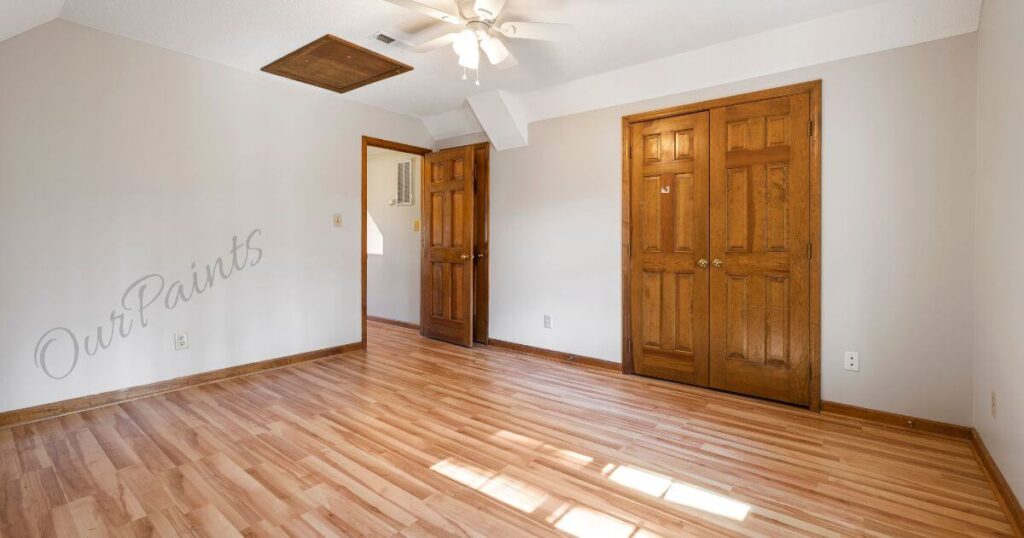
The realm of applying lacquer over polyurethane unfolds as an intricate tapestry, yet with the compass of sagacity and astute maneuvers, one can chart a course toward success. Within this repository, we present a compendium of invaluable tips and tricks to serve as guiding stars on this celestial journey:
The Prerequisite of Surface Purity:
Before the baptism of lacquer, the sanctity of the polyurethane surface is paramount. Ensure its purity by purging it of dust, dirt, and the vestiges of grease. Employ the gentle abrasion of fine-grit sandpaper to bestow a textural canvas that lacquer may ardently embrace.
The Overture of a Test:
Never embark blindly; rather, commence with a prelude. In a small, unassuming recess, perform a test of the lacquer’s affections. This dalliance unveils compatibility and negates any unsavory rendezvous, ensuring a harmonious union.
The Quest for the Appropriate Lacquer:
Lacquers are not created equal; therefore, seek one tailored to polyurethane’s embrace or seek counsel from the connoisseurs. Ensure you enlist a kindred spirit in the form of the right lacquer.
The Symphony of Thin Coats:
Eschew the allure of excess. Apply lacquer with a delicate touch, in thin and even layers. Shun the siren call of thick layers, for they usher in a tempest of drips, runs, and a disheveled visage. Allow each layer to luxuriate in complete desiccation before invoking the next.
The Selection of Prudent Instruments:
Choose your tools wisely, for they are extensions of your intent. Whether it be a high-quality brush or the elegant sweep of a sprayer, let your preference and project size guide your choice. Ensure the tools stand pristine, and poised for the orchestration of a flawless finish.
The Ritual of Sanding Between Acts:
To attain a visage of consummate professionalism, interweave the sands between coats. Bestow a gentle exfoliation upon the surface, smoothing out imperfections, and kindling the flames of adhesion between strata. This ritual conjures refinement.
The Benison of Patience:
In the realm of lacquer, time unfurls at a measured pace. Heed the manufacturer’s counsel regarding the interregnums of drying. Be patient, for haste begets imperfection. Permit each coat to find completeness before the embrace of the next, and refrain from subjecting the surface to its destined use until the appointed hour has arrived.
Engrave this counsel upon your heart, for within them lies the key to confidently applying lacquer over polyurethane. An exquisite, enduring finale awaits, one that elevates the allure and safeguard of your creation. And remember, the oracles of the lacquer manufacturer hold their wisdom; heed them for the zenith of results.
Potential Issues And How To Troubleshoot Them:
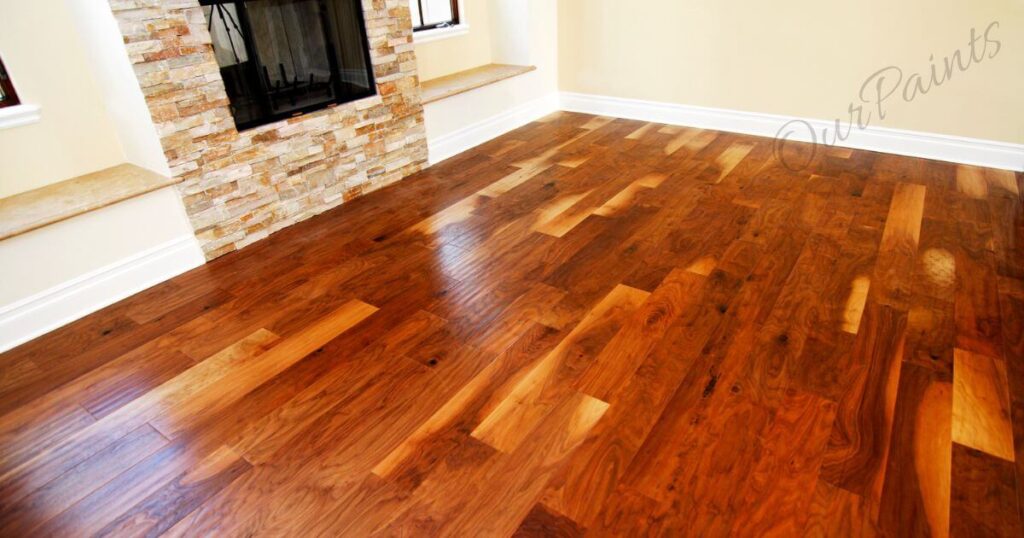
In the intricate dance of applying lacquer over polyurethane, one may encounter a few potential issues. However, armed with knowledge and adept troubleshooting techniques, these challenges can be surmounted, leading to the realization of a resplendent finish.
Adhesion Woes:
A common nemesis is the lackluster bond between the lacquer and the polyurethane substrate. The consequences are manifest in peeling, bubbling, or a countenance marred by unevenness.
To quell this uprising, one must first sanctify the polyurethane surface through an exorcism of dust, dirt, and oily residues. Follow this purification with a gentle sanding, which bequeaths a textured terrain, fostering a more ardent embrace of lacquer.
For those who seek added insurance, the application of a primer or a bonding agent may seal the pact, fortifying adhesion.
Compatibility Conundrum:
Another specter that haunts this endeavor is the issue of compatibility. Not all lacquers are kindred spirits with polyurethane, leading to chemical skirmishes or a visage clouded by ambiguity.
To dispel this enigma, choose a lacquer specifically crafted for polyurethane companionship. Seek guidance from the oracles inscribed on product labels or consult the sages at your local emporium of hardware. In their wisdom, you shall find the nectar of compatible lacquers.
The Time Conundrum:
Drying and curing times can unfurl their tapestry of quandaries. Insufficient drying time may bestow a tacky, pliant visage upon the canvas, while a hasty application of thick or multiple coats, without the interlude of patience, may summon the phantoms of cracking or wrinkling.
The remedy lies in the embrace of the manufacturer’s counsel. Each layer of lacquer must languish in complete desiccation before the next is summoned. Furthermore, the final coat must be granted its allotted span for curing before it is handled or put to use.
In summation, the path to applying lacquer over polyurethane may be strewn with potential pitfalls, yet with meticulous preparation, the selection of compatible products, and steadfast adherence to prescribed drying and curing intervals, these obstacles can be surmounted.
In conquering them, one births a visage that marries the robustness of polyurethane with the allure of lacquer, yielding a truly extraordinary denouement.
Comparing The Final Appearance And Durability Of Lacquer Over Polyurethane:
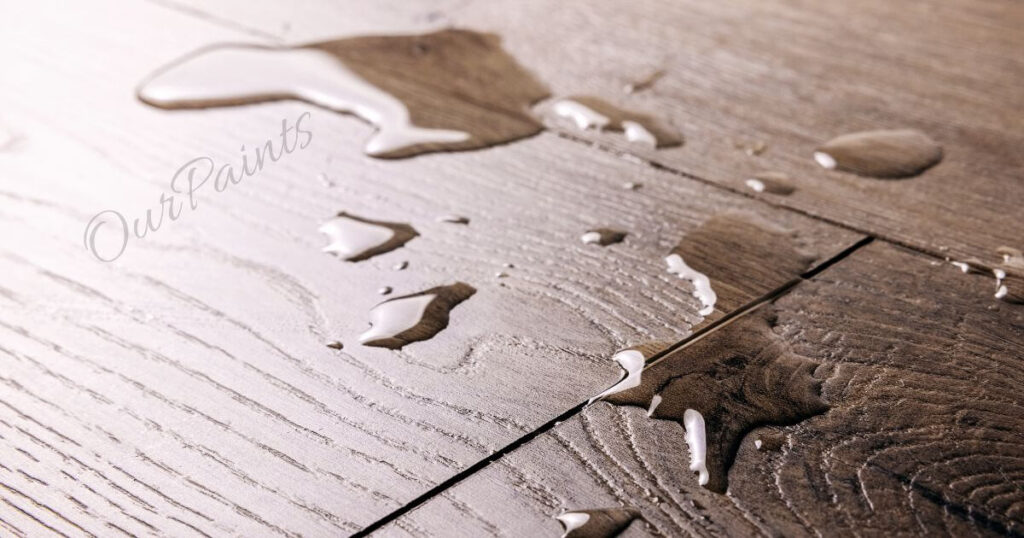
In the realm of wood finishing, the choice between lacquer and polyurethane is akin to a conundrum that beckons contemplation. Each wields its distinct virtues, and comprehending the dichotomy in visual allure and tenacity is paramount before arriving at a resolute verdict.
Lacquer:
Celebrated for its suave and lustrous visage, bestows a veneer of remarkable transparency that elevates the innate grace of wood. It ushers forth a resplendent, crystalline facade, wherein the very grain of the wood seems to reverberate with vitality.
The ritual of application entails the delicate dance of multiple thin coats, each left to find its moment of desiccation before the next layer graces the surface. The culmination is an exquisite, mirror-like sheen, replete with reflective allure and a tactile silkiness that beckons the hand.
On the opposite pole, polyurethane extends a more rugged and vigilant guardianship. It bequeaths a stalwart, almost plastic-like shield that deflects the slings and arrows of scratches, moisture, and quotidian wear and tear.
The spectrum of sheens it offers, ranging from satin to high gloss, is an invitation to craft a tapestry of gloss that aligns with one’s aesthetic vision. The application arsenal includes brushes, rollers, or sprays, rendering polyurethane a versatile ally in the domain of woodworking.
In the realm of endurance, polyurethane tends to ascend the throne. Its steely exoskeleton makes it a valiant defender against the ravages of daily use, rendering it a preferred choice for high-traffic domains, such as tabletops or floors. Lacquer, while beguiling, may demand more frequent homage to maintain its glossy countenance.
The choice, ultimately, stands upon the fulcrum of one’s particular requisites and predilections. Should one’s heart yearn for an opulent, gleaming allure, and be willing to invest time in the sacrament of maintenance, lacquer is the path to tread.
However, if durability and ease of guardianship stand as sentinels of your aspirations, then polyurethane shall unfurl its banner.
The prospect of placing lacquer upon polyurethane, while feasible, requires circumspect deliberation. The two possess differing chemical identities, birthing the potential for discord. Before embarking upon this liaison, a rite of passage ensues the sacred test upon a small, inconspicuous domain.
It is this crucible that shall unveil the pact’s fidelity and confirm the harmony between these two distinct finishes.
In conclusion, the comparison of the final aesthetics and endurance of lacquer over polyurethane stands as a vanguard, guiding the discerning craftsman toward an enlightened choice.
In contemplating the aesthetic vision, the bastion of protection, and the demands of maintenance, one forge the path that best suits their woodworking opus.
Conclusion:
Lacquer and polyurethane overlaying is a complex process that requires careful consideration of the desired denouement and compatibility. While maintaining a single finish is generally recommended for a durable veneer, there is a possibility of a harmonious coalescence.
A bonding agent or primer can help achieve this. However, consulting experienced artisans and finishing experts can provide bespoke guidance tailored to the specific materials and challenges of your project. They can help you discover alternative finishes or suggest options that maintain the essence of your project without compromising its integrity.
Making an informed choice for your project involves researching, heeding expert advice, and conducting thorough trials to ensure aesthetics and functionality align harmoniously with the desired outcome.
FAQs About Can You Put Lacquer Over Polyurethane?
Can you put lacquer over polyurethane?
In most cases, it’s not advisable to apply lacquer over polyurethane. Lacquer and polyurethane are chemically different finishes, and this combination can lead to issues like poor adhesion, peeling, or cracking. It’s generally recommended to choose one finish and stick with it throughout your project for a more consistent and reliable outcome.
Are there any situations where you can put lacquer over polyurethane?
While it’s not the recommended practice, in some situations, you can put lacquer over polyurethane. This involves careful surface preparation, compatibility testing, and using a suitable bonding agent or primer to ensure proper adhesion between the two finishes. It’s essential to follow these steps to minimize the risk of compatibility issues.
What should I consider before attempting to put lacquer over polyurethane?
Before attempting this combination, consider the condition of the existing polyurethane finish, the type of lacquer and polyurethane used, and the desired outcome. Proper surface preparation, such as cleaning and sanding, is essential. Conduct compatibility tests on a small area, and be prepared to use a bonding agent or primer if needed.
Can professionals guide you on putting lacquer over polyurethane?
Yes, consulting professionals in the woodworking or finishing field is advisable. Experienced woodworkers and finishing experts can offer tailored advice based on your project’s materials and conditions. They can guide you through the process, suggest alternative finishes, or recommend more suitable options to ensure your project’s success.
What’s the best approach for choosing the right finish for a project involving polyurethane?
The best approach is to carefully consider your project’s specific requirements, such as the desired appearance, level of protection, and maintenance needs. Based on these considerations, you can make an informed decision on whether to stick with a single finish or explore other compatible options. Consulting experts can also provide valuable insights.

